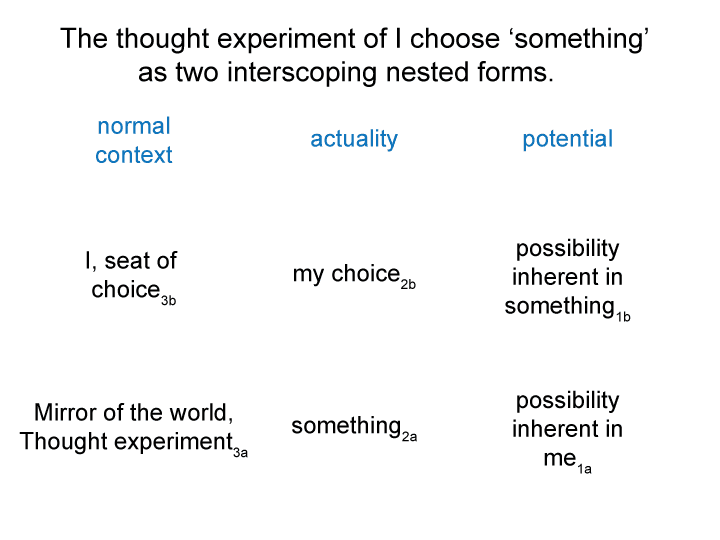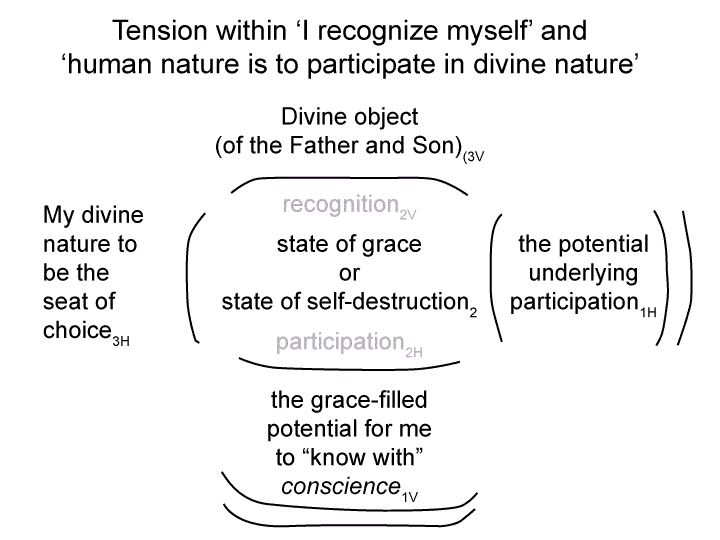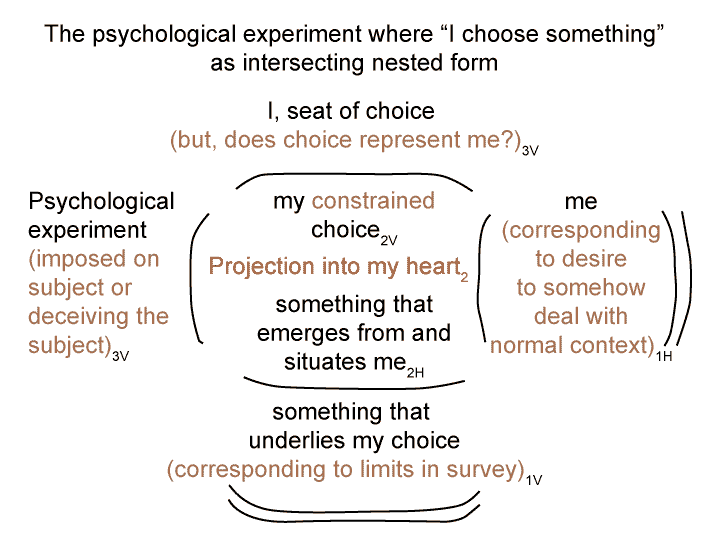Man and Sin by Piet Schoonenberg (1964) 2.3 BAF
Summary of text [comment] page 88
[The vertical axis is not unaffected.
The vertical axis intersects with the horizontal in the single actuality containing ‘my choice2V and something2H’.
The single actuality of ‘my heart2’ parallels ‘what I see2’.
‘I, seat of choice3V’, encounters new ‘possibilities inherent in something that I may choose1V’.]




